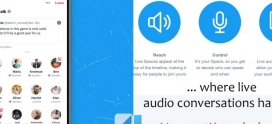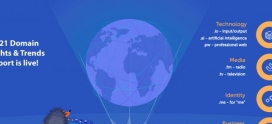
A Brand’s Guide to Getting Started with Influencer Marketing
The use of influencers is certainly not a new phenomenon in digital marketing strategy however, it does seem to be the buzz word in social media marketing at the moment for good reason
According to Influencer Marketing Hub, the Influencer industry is expected to be worth nearly $10B in 2020. That’s a lot of shout outs and collabs!
While the world is facing uncertain times, there’s still huge growth in influencer marketing. For its comparatively low cost, it remains a key strategy for marketers at global brands all the way down to small businesses. The trend continues.
What is an Influencer?
Word-of-mouth recommendations still play a crucial role in a consumer’s purchasing decision and its been shown to improve marketing effectiveness by up to 54% [MarketShare].
Millennials ranked word-of-mouth as the #1 influencer in their purchasing decisions about clothes, packaged goods, big-ticket items (travel and electronics), and financial products [Radius Global].
This trust in the recommendations of people has launched the careers of actively engaged individuals on social media, thus the creation of ‘the influencer’.
An individual can be identified as an influencer if they;
- have an established sense of authority/credibility in a certain industry (lifestyle, fashion, food, travel, fitness etc.)
- have a large reach to an engaged fan base (visibility)
- are authentic and have an ability to sway opinions/perceptions
Influencers have become somewhat of an unofficial friend, and we trust their recommendations more than branded content delivered directly from the brands they connect us with.
What is Influencer Marketing?
When a brand compensates an influencer for a promotional post – that is influencer marketing in its simplest form.
Why do Brands need Influencers?
The decline in outbound or “push” marketing effectiveness has led to more brands reaching out to influencers.
When a brand partners with an influencer, they get access to a number of things including;
- their personal aesthetic and authenticity
- the eyes and ears of a large, loyal and engaged fan base (the influencer’s following and their audience network)
- the production of branded content (User Generated Content)
- their ability to influence and illicit action for your brand
- their brand advocacy as they frequently engage with fan’s in two-way conversations
Industries benefitting from Influencer Marketing
Although influencers seem to be present in almost every industry these days, there are three industries that have arguably benefitted the most:
1. Fashion & Beauty
85% of beauty consumers say they would trust a cosmetic review by a YouTuber over any other method.
As 89.3% of all videos watched by females on YouTube are makeup/cosmetic related and consumers watch anywhere between 6-30 hours of these videos every week, it’s not hard to see why this market has flourished from engaging with Influencers.
2. Lifestyle & Travel
Unlike typical brand content, travel and lifestyle influencer marketing involves a more casual and subtle promotion using UGC
This has led to brands focusing their attention on the millennial market. With the help of influencers, travel companies are transforming themselves into lifestyle brands, with influencers creating perceptions of exclusivity, authenticity and a fear of missing out.
3. Health and Fitness
“Fitness, wellness and nutrition content and influencers have taken off because they are able to share a much more authentic journey, experience and struggle with something everyone has a connection to,” says Vanessa Flaherty, partner and senior vice president of Digital Brand Architects.
“It’s no longer a celebrity or physician-driven topic, instead it’s everyday people showing off what works and doesn’t work for them.”
How to find Social Media Influencers
With 6,000 tweets per second, 95 million posts on Instagram every day and 4 million Facebook likes per minute – it’s pretty easy to get lost down the rabbit hole searching for the best influencers for your brand.
Something important to note: influencers should be carefully chosen based on their image and how well it aligns to your brand, not just an individual with a large follower count.
The influencers you partner with should be your biggest brand champions as they’ll be interacting with their audience about your products/services and you want this exchange to be authentic.
Here are 4 ways you can find the perfect influencers for your next campaign:
1. Use an influencer database tool: Scrunch
Scrunch is a huge influencer database that enables you to filter based on criteria like industry, location, age, gender, hashtag and a number of other criteria. Best of all Scrunch is user friendly and powerful whilst being quite cost-effective. Most marketers use Scrunch to find influencers for campaigns or longer-term brand relationships.
Setting up your account is easy. Just click “I’m a Brand” and fill out the form! Once you’re in, you can start filtering influencers based on 23 different categories.
2. Use an influencer marketplace: TRIBE
TRIBE is a marketplace of micro-influencers who have signed up to the platform to receive “influencer briefs” from brands. Micro-influencers need to have a minimum of 3,000 fans to join the platform.
3. Use an influencer agency: Vamp
Vamp is an agency that represents hand-picked influencers. Brands brief Vamp on the campaign, the objectives, target audience and budget – then Vamp searches their books to suggest the best fit influencers for the campaign.
4. Use a social media listening tool: Awario
Awario is one of the best social media listening tools on the market. You can use Awario to search for mentions of your brand, products/services, competitors or industry terms and potentially find influencers who are already actively creating content in your niche. Who knows? You might even find some customers who happen to be influencers – that is a match made in heaven!
Create a shortlist of Influencers
Once you’ve searched high and low for potential influencers, log in to Social Status and select Influencer Analytics. Here you’ll be able to see all their performance stats for their Instagram and Twitter profiles, Facebook Pages and/or YouTube channels.
You can choose influencers based on how often they post, number of Interactions, average Engagement Rate, growth and a number of other criteria.
The great thing about Influencer Analytics is that you can continue using it after you’ve engaged your influencers. Influencer Analytics can be used to track and report on the performance of your influencers down to the post level. You can export reports to PDF, PowerPoint and Google Slides. You van try it for free for 14 days.












